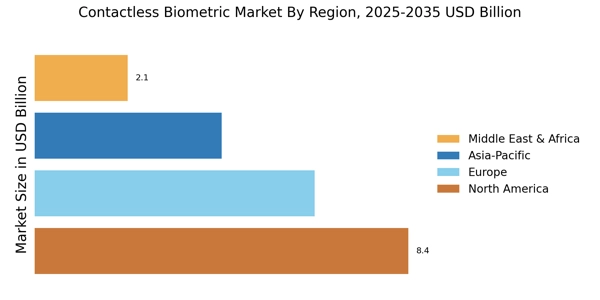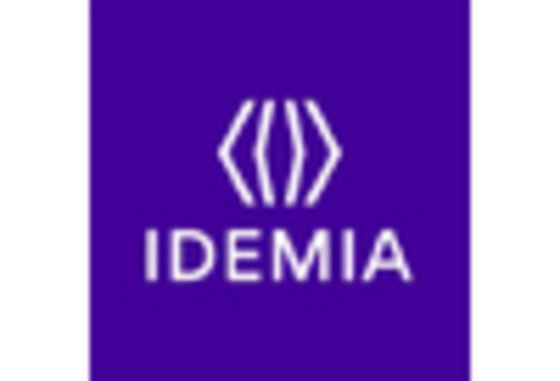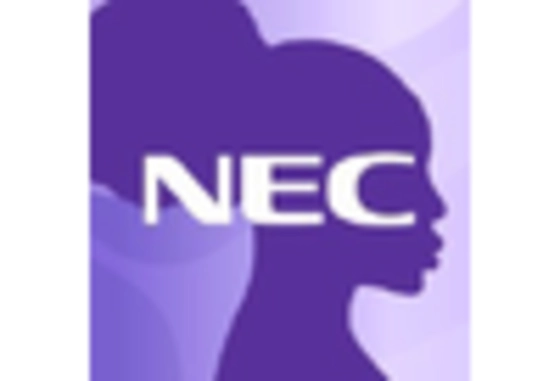Expansion of Smart Cities
The development of smart cities is playing a pivotal role in the growth of the Contactless Biometric Market. As urban areas increasingly integrate technology into their infrastructure, the demand for contactless biometric solutions is rising. These technologies are being utilized for various applications, including access control in public transportation, secure entry to government buildings, and enhanced surveillance systems. The integration of biometric systems into smart city initiatives is expected to improve public safety and streamline urban management. Market forecasts indicate that the expansion of smart cities will significantly contribute to the growth of the contactless biometric sector, as municipalities seek innovative solutions to enhance security and efficiency.
Increased Focus on Security
In an era where security concerns are paramount, the Contactless Biometric Market is witnessing a heightened focus on security measures. Organizations are increasingly adopting biometric systems to mitigate risks associated with unauthorized access and identity theft. The ability to authenticate individuals without physical contact is particularly appealing in environments where hygiene and safety are critical. As a result, many businesses are investing in biometric technologies to enhance their security protocols. Market data indicates that the demand for contactless biometric solutions is expected to rise, with a notable increase in adoption rates across sectors such as banking and public safety. This trend underscores the importance of security in driving the growth of the Contactless Biometric Market.
Growing Demand in Healthcare
The healthcare sector is emerging as a significant driver for the Contactless Biometric Market. With the increasing need for secure patient identification and access control, healthcare providers are turning to contactless biometric solutions to streamline operations and enhance security. These systems facilitate accurate patient identification, reducing the risk of medical errors and improving overall patient safety. Market data reveals that the adoption of biometric technologies in healthcare is projected to grow at a substantial rate, driven by the need for efficient and secure patient management systems. This trend highlights the potential for contactless biometric solutions to transform healthcare operations and improve patient experiences.
Regulatory Compliance and Privacy
The Contactless Biometric Market is significantly influenced by regulatory compliance and privacy concerns. Governments and regulatory bodies are establishing stringent guidelines regarding the use of biometric data, which necessitates that organizations adopt compliant technologies. This regulatory landscape is pushing companies to invest in contactless biometric solutions that not only meet legal requirements but also prioritize user privacy. As organizations strive to build trust with consumers, the demand for transparent and secure biometric systems is likely to increase. Market analysis suggests that compliance with regulations such as the General Data Protection Regulation (GDPR) is becoming a critical factor in the selection of biometric technologies, thereby shaping the future of the Contactless Biometric Market.
Technological Advancements in Contactless Biometric Market
The Contactless Biometric Market is experiencing rapid technological advancements that enhance the efficiency and accuracy of biometric systems. Innovations such as artificial intelligence and machine learning are being integrated into biometric solutions, allowing for improved recognition rates and reduced false positives. For instance, the implementation of advanced algorithms enables systems to analyze biometric data more effectively, which is crucial for applications in security and access control. According to recent data, the market for biometric technology is projected to grow significantly, with a compound annual growth rate of over 20% in the coming years. This growth is driven by the increasing demand for contactless solutions in various sectors, including finance, healthcare, and government services.


















Leave a Comment